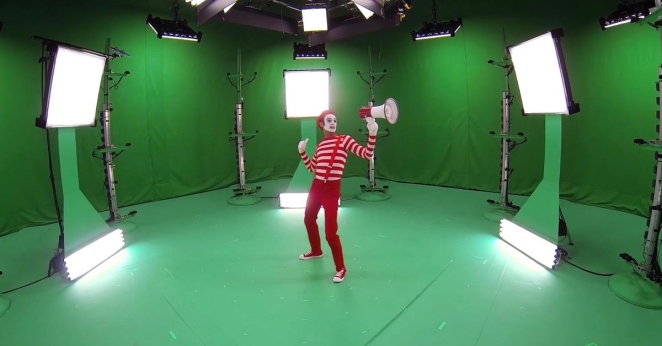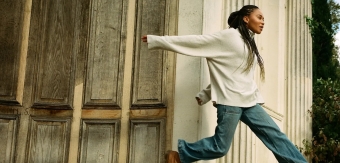With many big brands dipping their toe into the video games industry, we’ve seen a shift towards gamification - the application of typical elements of game playing to the customer experience. Augmented reality (AR) in particular, promises to bridge the gap for consumers moving between the physical and digital worlds. As marketers move into the metaverse, AR has become an easy-to-execute and accessible way to get there.
Tom Emrich, Director of Product Management at Niantic, the AR developers behind Pokémon GO, takes a look at how AR is helping brands transform physical spaces into immersive experiences for shoppers. 8th Wall has powered over 2,000 commercial WebAR experiences for top brands across industry verticals.
Digital twins

By taking advantage of the physical space, AR unlocks a location’s digital twin, which can be augmented to create an infinite number of extraordinary experiences. This gives new meaning to a location and engages consumers in an interactive experience that can lead to measurable results.
More specifically, WebAR (or web-based augmented reality) is being used to deliver experiences that are immersive, accessible and deliver results across the marketing funnel. Web AR is easy for anyone with a smartphone to use.
Instead of requiring users to download new apps, this frictionless technology can be accessed by just clicking on a link, scanning an image or QR code - making it extremely easy and accessible for users to engage with.
WebAR opens new ways to connect with users by engaging them in extraordinary, interactive experiences anywhere they are.
Bringing shoppers to the street

WebAR is being used to enhance brick-and-mortar retail, encouraging customers to visit stores in-person rather than purchasing products online. Considering over 8,700 chain stores disappeared from Great Britain’s retail locations in the first six months of 2021, AR campaigns could be one way to help draw crowds back to the high street.
Just look across the pond in Australia for proof of concept. The “Hell’s Sovereign” WebAR experience launched this Halloween season from immersive technology agency, Unbound. This location-based experience used AR to reveal the historical city center’s Halloween-themed parallel world, rewarding shoppers with discount vouchers for surrounding stores.
Shoppers who visited the area could point their smartphone camera at a bronze statue of Queen Victoria, triggering the AR experience and transforming the statue into a haunted version of itself, complete with zombie hands bursting up through the ground and a flock of crows landing on the statue.
The AR crows were tied to exclusive and limited daily retail offers and only a certain number of crows are spawned each day. This created a sense of urgency for consumers to visit the statue, encouraging them to return.
Holidays like Halloween are an especially critical time for brands to engage with consumers, with purchases skyrocketing on clothing, decorations, food/drink and more. This is something to keep in mind as the Christmas season approaches.
Both holidays seem to start earlier and go on for far longer than it used to - and for good reason. As one of the most profitable times of the year for many retailers, brands must find new and innovative ways to stay top of mind with customers.
Bringing shopping to the home

There’s also a huge demand for retailers to embrace AR online. Accelerated by the pandemic, ecommerce has become the new normal for many shoppers, especially in the younger demographic. Over a fifth of Gen Z want retailers to embrace AR so they can try on products digitally - the next best thing to a shop visit.
Just this year, RPR and the Microsoft Reactor Capture Studio brought a first-of-its-kind holographic modeling and fashion platform to online shopping. Clothing companies and online retailers can bring a diversity of holographic models down a virtual runway in the privacy of the consumer’s own home, improving the way we engage with products and shop online.
One of the biggest barriers to purchasing clothes and accessories online is the inability to see clothing at scale and in-person, reducing the confidence that the items will look and fit as it does in the 2D photo. Now users will be able to view a diversity of holographic models wearing the clothing item at human scale in the real world.
Experiences like this one can improve buyer confidence around online clothes shopping by bringing customers face-to-face with an item to inspect fit, look, and quality. WebAR is demonstrating success at every stage of the funnel from awareness and interest to consideration and purchase.
All from a shopper’s smartphone

Web AR has unlocked the massive opportunity of augmented reality for marketers, advertisers and brands, no app required. This game-changing technology can help companies tap into a huge range of experiential marketing campaigns, from embedded AR worlds and characters to filters and digital ads.
Worldwide, there are now 5 billion smartphones capable of engaging with WebAR in the hands of potential shoppers. Brands are experimenting with this technology in new and exciting ways to give people reasons to visit, explore and engage with retail - both on location and online.






